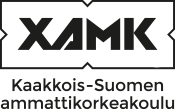Process Engineering (5 cr)
Code: EN00BH70-3003
General information
Enrollment
15.08.2020 - 04.09.2020
Timing
31.08.2020 - 16.10.2020
Number of ECTS credits allocated
5 op
Virtual portion
1 op
Mode of delivery
80 % Contact teaching, 20 % Distance learning
Campus
Kotka Campus
Teaching languages
- Finnish
Seats
0 - 30
Degree programmes
- Degree Programme in Energy Engineering
Teachers
- Merja Mäkelä
- Kalle Tarhonen
Teacher in charge
Merja Mäkelä
Groups
-
ENKT18SP
Objective
After completing this course, you will be able to
• describe the significance of process design in process integration
• present main processes and machinery of process industries
• work out the dimensioning of process machinery and compute steady states
• define dynamic flow, heat and mass balances for simulations
• identify authority obligations in process design.
Content
How are you able to design processes by taking into account technical, economic, safety-related and environment-related aspects?
What kinds of machines are used in processes and how do they work?
How do you compute the capacity of a process and its steady state?
How do you create a dynamic process model and make a simulation program?
Which processes need authority obligations?
Materials
Learn materials
Learning Environment for Papermaking and Automation, KnowPap, AEL and Prowledge, 2015, Finland.
Learning Environment for Chemical Pulping and Automation, KnowPulp, AEL and Prowledge, 2015, Finland.
AutoCAD ja CADMATIC
Matlab Simulink
Teaching methods
Scheduled track:
After completing this course, you will be able to
- describe the role of process design in process integration
- present main processes and machinery of process industries
- work out the dimensioning of process machinery and compute steady states
- define dynamic flow, heat and mass balances for simulations
- identify authority obligations in process design.
How are you able to design processes by taking into account technical, economic, safety-related and environment-related aspects?
What kinds of machines are used in processes and how are they working?
How do you compute the capacity of a process and compute its steady state?
How do you come to a dynamic process model and make a simulation program?
Which processes do need authority obligations?
Independent track:
Working as a process designer and portfolio
Blended track:
Exam and design project
Exam schedules
Exam 28.10.2020.
Resit exam 11.1.2021.
Student workload
20 h lectures
40 h supervised design and simulation exercises
75 h self-study
Further information
Prerequisite courses are:
Energy Engineering Mathematics 2
Technical visualisation and CAD
Statics and strength of materials
Thermodynamics and heat transfer
The participation in design and simulation exercises according to the schedule is required.
Evaluation scale
1-5
Assessment methods and criteria
Written exam, with grades 0-5, 60 %.
Project, with grades 0-5, 40 %.
Both should be accepted.
